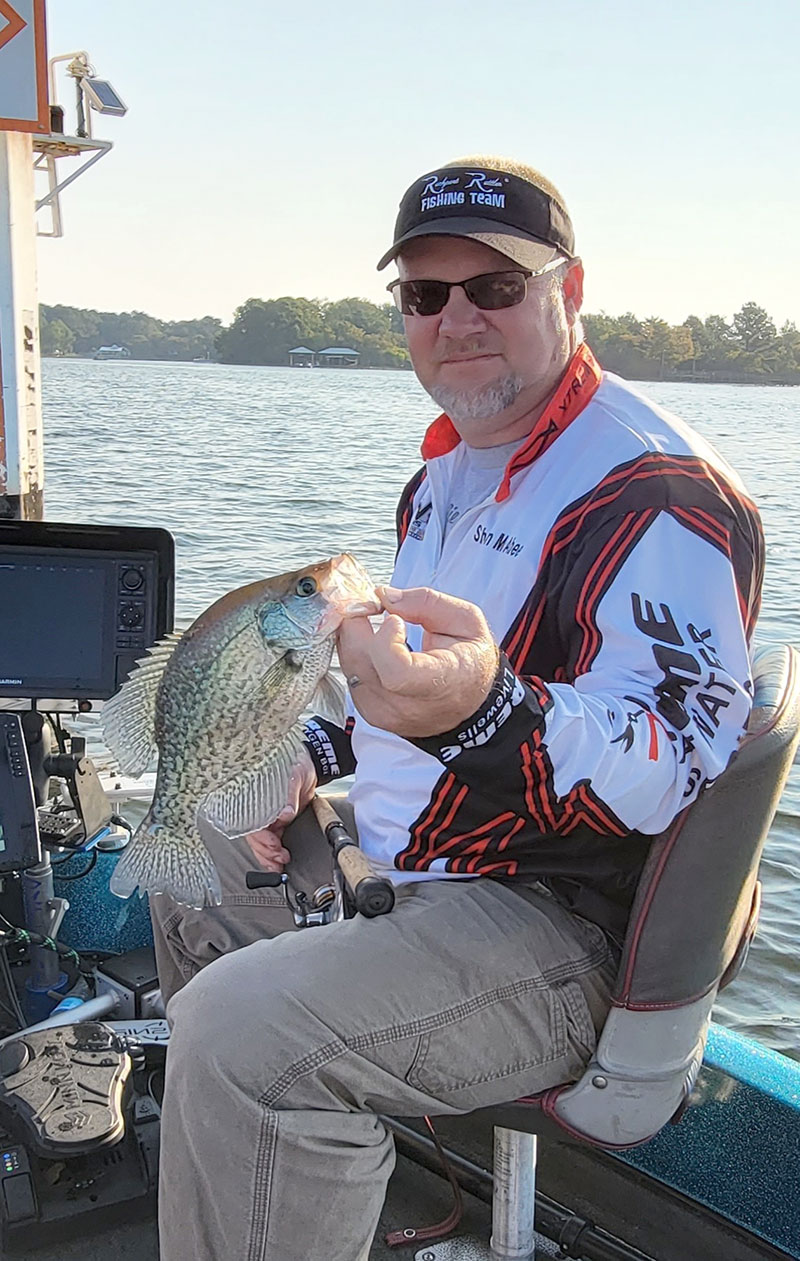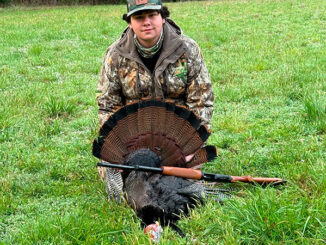
Lake Hartwell’s crappie are transitioning to deep water
In South Carolina’s upstate waters of Lake Hartwell, the crappie have completed their spawning ritual by May. They are now transitioning back to deeper water, but anglers can find slabs in numerous places as they ease their way to those deep holes.
Shaun McAbee fishes all over the Carolinas, competing in tournaments and fishing for pleasure. He said this month, the crappie can be a bit lethargic as they recover from the spawn. But that doesn’t mean they aren’t catchable.
Go small for slabs
One key, he said, is to go small on your offerings.
“They are tranisitioning back out to where they were before they moved in on their spawning beds. They’ll be pretty lethargic most days, and the bite can be tough. They’re going to want something small. This calls for small minnows and small jigs — as small as you can get away with, like 1/32-ounce. Use the smallest minnows you can find,” he said.
As for where to fish, McAbee said it’s wide open. You’ll find groups of fish at various depths throughout the lake. Some will be in flats, some will be on mid-range brush, and some will be on docks in a variety of depths. This lake is very deep, so electronics will play a role in finding them this time of year.
“You’ll find a lot of crappie on docks this month. They can be anywhere from 15 to 30 feet deep on those docks.
McAbee said using side scan on your depthfinder is a big help in finding the scattered fish.
Lock it down
“Most of the time right now, we use side scan on docks and on brush. We’ve got certain brushpiles marked that, year after year, they’ll hold crappie at some point this month,” he said.
Trolling is not McAbee’s preferred method of fishing this month. Instead, he locates the fish with his electronics, then hits the anchor-lock feature on his trolling motor to hold in place. When targeting docks, he’ll sometimes fish straight vertically. But on brush, he’ll usually stay about 30 to 40 feet away.
“We spot lock in casting range, then cast to them. And most days, you’ve just about got to put the bait or lure right on top of them,” he said. “The water has cleared up for the most part by May, so you want to give the fish some room. They can see real well in this clear water,” he said.
With today’s high-tech electronics, some of the most basic essentials are just as important. And some of those have advanced just as far as today’s electronic fish-finding technology. Fishing rods have come a long way, and anglers specificially targeting slabs in this situation have never had so many specialized options to choose from. McAbee keeps two distinct models on his boat deck this month.
“I use an 8-foot, Catch The Fever Casting Series rod, and a 10-foot Catch The Fever Jigging Series rod. And this time of year, you don’t want your lure or bait to do any kind of erratic action. Make your cast, then just use a slow, steady retrieve. You want it to look as natural as possible. Don’t bounce it or hop it, just a slow, steady, natural-looking retrieve,” he said.





Be the first to comment